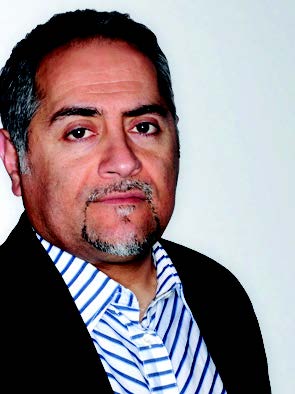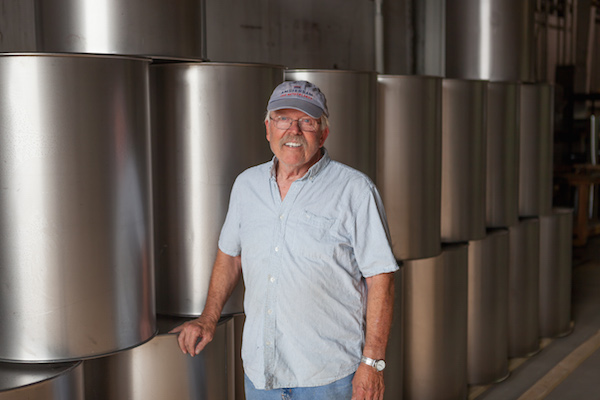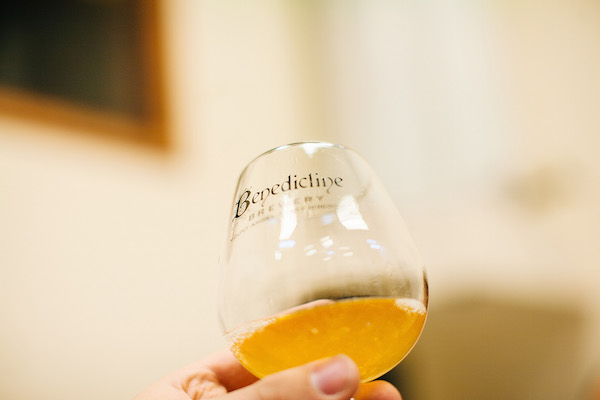written by Kevin Max
Sohrab Vossoughi, 53, left Tehran, Iran for the United States forty years ago to study engineering. He worked for Hewlett-Packard before falling in love with Portland. It was there, in 1984 that Vossoughi founded Ziba, a gold standard in industrial design. Ziba works with clients like Honda and Nike to help design products and packaging, branding and communications. Designing for a global market demands a global perspective. Today, at Ziba’s headquarters, you’ll find people from eighteen countries collaborating across many disciplines and projects in a Pearl District building that is, itself, a marvel of creativity and sustainable building. Vossoughi lives in Portland with his wife, Haleh, his son, Aria and daughter, Ava.
You had already left Iran for the United States before the Iranian Revolution. What do you miss most?
I miss the food, hospitality, learning, the importance of family and experiencing the multitude of human interactions that make up daily life in Iran, such as frequenting the newsstand, the neighborhood grocer and tea shop. The values and philosophy rooted in ancient Persian culture are still with me. For example, I think of Persian proverbs in my daily life to this day, proverbs that have even guided me in creating and managing Ziba and moving it forward.
How did you end up at San Jose State? What were your first impressions of America?
My father sent my uncle to the U.S. in the early 1960s to study, and then he sent my brother in 1969. I followed in 1971, initially to finish high school and get a college degree and learn the language. We lived in San Jose. I wanted to study engineering, and San Jose State had a very good program and was close. The plan was always for me and my brother to return to Iran after my studies. But then the revolution took place in 1977 and we delayed going back, with the result that I’ve been here ever since, except for a visit to Iran in 2001.
My first impressions? Moving to a new culture is always hard, especially when you leave your parents behind. It was not easy because it was such a huge change. If it hadn’t been for my brother and my uncle, it would have been much more difficult. Some things were strange, but I adapted. Persians assimilate very quickly.
What I noticed was that the family was not the center of society, it was the individual. In Iran, people from extended families live very close to each other and kids are never alone. For me, it was strange to eat dinner alone. While the social fabric seemed thinner, I learned quickly that in the U.S. what counts is to be independent and make your own way in the world.
The other surprising thing was to see that everybody worked, and worked hard. In Iran, it was still unusual for kids and students to work, and there was a clear balance between work and home.
Of course, I started working right away because there was the opportunity to work, even though my father was furious with my uncle about it. We told him that was just the way it was here.
Generational respect was missing and jarring to me. For example, in the classroom, I noticed respect was lacking. In Iran as in other countries the teacher is like a god. Respect for authority and elders were missing.
Of course I loved the abundance and the freedom. You could be anything by working hard. It is still the land of opportunity. I still believe that nowhere else like the U.S. allows you to do what you want and succeed.
In 1982, the U.S. was in a recession. You left Hewlett Packard and began consulting with companies in Portland. Why Portland?
In 1982, I was freelancing but still at HP. In 1984, I launched Ziba Design. I love Portland. I connect with
the way it is situated, the nature and water giving it a character similar to European cities that I encountered when I first left Iran. Portland’s values of humanity, craft, lack of pretension and balance appeal to me. A lot of start-ups were here at that time, and it had an atmosphere conducive to taking risks. I had the chance to return to California or go elsewhere but I wanted to be here.
Tell me about the genesis for Ziba and its early days.
When I got married, I was working at Hewlett Packard, freelancing at the same time and Haleh was going to school. About a year later, I took a huge risk and left HP. Haleh gave me enormous support and encouraged me to seize the opportunity, do what I wanted to do and not be afraid of failure. She helped with office work such as bookkeeping and even sanding models in the early days. I couldn’t have done it without her.
For the first few years it was myself, a few interns and short-term contractors. But it was a good time to be starting, as barriers to entry in Portland were low. The cost of living was manageable and an entrepreneur could go a long time without running out of steam or funds. What was difficult was finding designers in Portland. That has certainly changed. My first fulltime hire was Henry Chin in 1987, who is today’s Ziba’s executive director.
ProForm exercise equipment was an early client, and since we worked out of their facility, that helped us incubate and develop in a way that was mutually beneficial. Nevertheless, I learned some hard lessons on starting a business, as do all entrepreneurs.
What resources does Ziba bring to a design process?
We started by focusing on designing and creating beautiful objects, and now we create beautiful experiences, which include and integrate objects (products), environments such as retail, services, communications, and interaction design such as user interface and web. Almost everything is created in the context of the user experience and the brand. The resources we bring are many. We are so
multidisciplinary that we can take innovation projects from beginning to end. We can take the innovation process from the definition of the brand and consumer, to identifying opportunities for the consumer and brand, to giving a brand an identity, creating a design strategy and applying that strategy to everything related to a brand whether it is a store, packaging, product, Internet or servicefor a 360 degree experience. Our design practice groups are Consumer Insights and Trends, Industrial Design, Environments Design, Communication Design and Interaction Design.
Tell me about the relationship between creativity and workspace and how that plays out at your Pearl District building.
Creativity is our daily bread. So what we designed is a building that supports creative work. That means we have as many project rooms as individual desk space, because creative work depends on collaboration and teamwork, particularly if you have a multidisciplinary group. The project rooms enable teams to maximize the amount of time working together, minimizing the amount of time they spend
in solitary activity at their desks.
We also wanted to build in opportunities for spontaneous brainstorming and serendipity. The various empty spaces— corridors, lounge areas, the kitchen, the two decks—allow people to bump into each other and easily find a comfortable place to exchange ideas.
Flexibility is very important to creativity— whether in time or space. We need to know what is the boundary, but the boundary needs to be elastic. I think of it like creating a six-lane not one-lane highway.
What are the benefits of a multicultural office?
Rigid thinking is the enemy of innovation. Having many cultures represented keeps rigidity at bay. I believe it is very important to be exposed to different points of views and insights that emerge from different cultures. A behavior that makes sense in Japan may seem alien in the U.S. , but it could also
be forward looking. In the Ziba culture, tolerance for a variety of perspectives is built into our daily lives.
We are a microcosm of America, even the world. That is why the U.S. is such a good environment for innovation, because despite its many real issues and problems, it is still very tolerant compared to many other countries.
What are the benefits to clients?
Innovation! Having different points of viewcreates breakthroughs. Most of our clients are global companies that need various perspectives and for their design partner to understand global culture.
The World Cup must have been interesting at Ziba.
We had a huge screen in the Ziba auditorium running all the games so that staff could have fun watching. I was often there for the 7 a.m. games. I thought Argentina, Spain and Holland had the best odds of making it to the semifinals. Two out of three was not bad!
What are you working on now?
Once the Industrial Designer Society of America 2010 conference is over on August 7, I’ll be turning my attention to the Portland Center for Design and Innovation. PCDI is a nonprofit, city-supported
initiative to raise Portland’s contribution to the design industry and economy. The first phase will focus on creating a materials library in the city, which I believe, will make Portland a regular destination for designers all over the U.S. western region. Right now the only such library is in New York. When we have one here, designers from Vancouver to Los Angeles to Phoenix will have the option to view cutting edge material in Portland rather than the more expensive New York.









